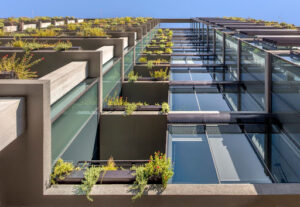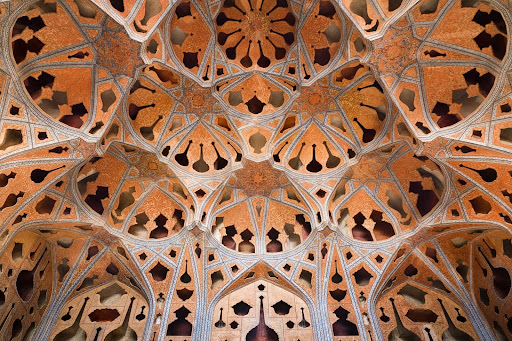Imagine entering a building where every element, from the rustle of leaves to the gentle flow of water, is part of an orchestrated sensory experience. This is the nature of soundscaping in architecture, a subtle yet powerful tool that architects use to shape our experience of spaces. Beyond the tangible structures and visual designs, soundscaping invites us into a deeper connection with our surroundings. Today, we’re exploring the intricacies of soundscaping in architecture, notable examples, and its relationship with other design approaches like biophilic architecture.
Soundscaping, in its essence, is the art of creating or modifying sound in a space. It’s about understanding how sound impacts our psychological and emotional well-being. From the bustling noise of a cityscape to the serene whispers of a forest, our environment’s sounds can alter our mood, productivity, and even health.
In the world of architecture, soundscaping is carefully woven into the design process. Architects and designers manipulate materials, spatial layouts, and unique architectural features to control sound. The key lies in striking a balance – absorbing unwanted noise while enhancing pleasant sounds, be it the gentle flow of water or the rustle of leaves.
Consider the Music Hall at the Āli Qapu Palace in Iran or Ekko in Denmark; these iconic structures are testimonies to successful soundscaping. The Music Hall at the Āli Qapu Palace not only focuses on visual appeal but also on how sound travels and enriches the listener’s experience. The various vaults in the ceiling help to create a lower reverberation time for the sound in the space, making it the perfect venue for intimate Iranian ballads.
Ekko in Denmark takes soundscaping to another level and is almost an instrument itself. Wooden frames are twisted in various forms with microphones scattering the build to capture the sounds visitors make when walking through the piece of art. Closer to everyday life, the design of open-plan offices and urban parks also incorporate soundscaping to create spaces that are both functional and inviting.

Soundscaping finds a compatible ally in biophilic design. This approach integrates natural elements into architectural design, creating spaces where humans feel more connected to nature. Integrating soundscaping with biophilic design – think our Signature Vertical Landscaping System™, where the lush plants act as miniature gardens while providing benefits like ambient noise reduction – creates environments that are restorative and healthful. The gentle souSignature Vertical Landscaping System™nd of flowing water or rustling leaves can transform a space into a tranquil haven, promoting wellbeing and reducing stress.
The thoughtful integration of soundscaping in architectural design goes beyond aesthetics. It creates spaces that resonate with our innate need for comfort and tranquility. In a world where noise pollution is an increasing concern, soundscaping emerges as a vital tool in crafting spaces that are not just visually stunning but also acoustically harmonious.

